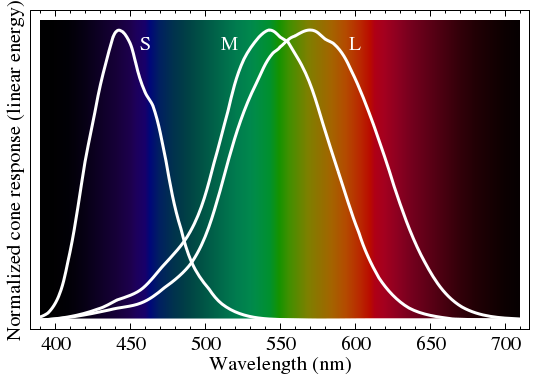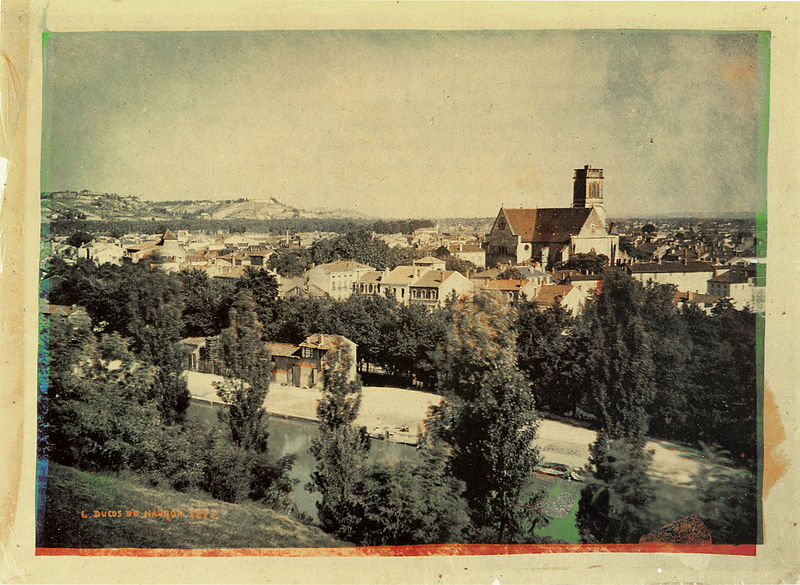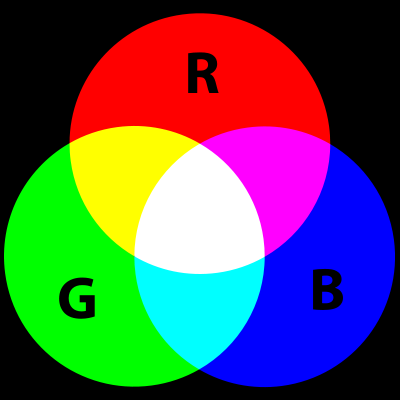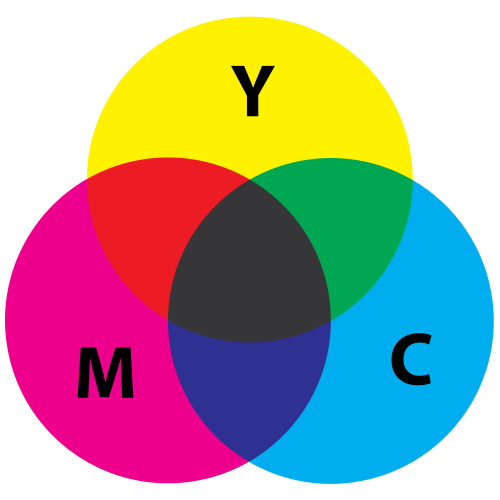
Figure 1 – The spectral response of the S, M, and L photoreceptors in the human eye, from Wikimedia and in the public domain
I’d like to discuss further the nature and development of color photography. Always key to understanding color is the nature of the human eye. Figure 1 is one that we have have seen before. It shows the response of the human eye to color. The human eye has three types of color receptors, S, M, and L cone types, each with its own spectral sensitivity. Color vision, in its essence, comes from the relative excitation of the these three types of photoreceptor cells.
There are two ways to create color: additive and subtractive. Additive color starts with black and builds up from there with pure primaries, usually red, green, and blue. Take a look at Figure 2. You might imagine, for instance, that the image of Figure 2 was created with three slide projectors, projecting a red, a green, and a blue circle respectively. Where they all mix equally you get white. Essentially, any color can be achieved by varying the proportions of these three primary colors.
Alternatively, see Figure 3, you can start with white and progressively subtract colors. This is what happens when you mix paints. Blue paint absorbs all colors except blue, which it reflects back at you. Yellow paint reflects yellow light. When the two colors are mixed you get green – as we all learned in kindergarten. The usual primaries for subtractive color are yellow, magenta, and cyan. You can think of the circles in Figure 3 as being filters of each of these three colors. Where they all overlap, you get black, and every color in between black and white can be achieved by some mixture of the three.

Figure 4 – Early subtractive color process by DuHaurron 1877, from Wikicommons and in the public domain
In future blogs I’m going to talk about various color processes. Indeed, we have already spoken about the additive Autochrome process and looked at some examples. So for fun, consider Figure 4 a photograph taken by Louis Arthur Ducos du Hauron (1837-1920) and created by the helichrome multilayer dichromated pigment process. This is an early subtractive color process and if you examine the edges of the image you can quite clearly see the different pigment layers.


